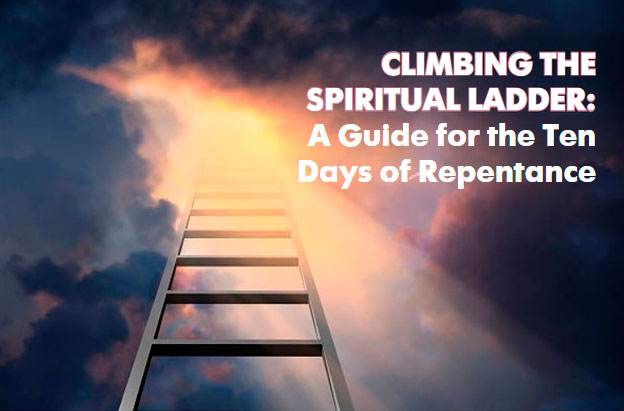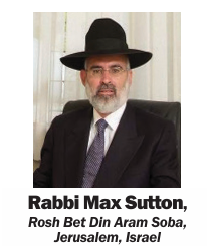By Rabbi Hayim Asher Arking and Rabbi Ezra Ghodsi
Before entering the sukkah, one should have in mind that Hashem commanded us to sit in the sukkah to remember that He surrounded our ancestors with the Clouds of Glory when they left Egypt.
Throughout Sukkot, one should view the sukkah as his house. Therefore, eating, drinking, sleeping, and relaxing should be done in the sukkah. Nevertheless, while one fulfills a mitzvah every time he performs any of these activities in the sukkah, only the activities of eating, drinking, and sleeping strictly require a sukkah.
What foods must be eaten in the sukkah?
It is an admirable practice to ensure to eat all foods and drink all beverages – even water – in the sukkah. Foods made from any of the five principal grains – wheat, oats, barley, spelt, and rye – must be eaten in the sukkah if one eats a quantity of more than a ke’betzah, which is approximately 2 oz, or the volume of half an average pita. Other foods (including rice, even though we recite the berachah of “mezonot” over rice) may be eaten outside of the sukkah.
If one started eating a meal that includes at least a ke’betzah of bread, he may not eat or drink even the slightest amount of food or drink outside of the sukkah during his meal. One should not even leave the sukkah with food in his mouth during the meal. He may leave the sukkah during the meal only after he has swallowed the food or drink in his mouth.
Which foods require the recitation of the berachah of “leshev basukkah”?
The berachah is recited only when eating at least a ke’beitzah of bread or three ke’betzim of mezonot foods, excluding rice.
When should one the berachah of “leshev basukkah”?
Generally, when one eats a meal with bread, he recites the berachah together with the berachah of hamotzi recited over the bread. On Shabbat and yom tov, however, the berachah of “leshev basukkah” is recited when reciting kiddush before the Shabbat or yom tov meal.
If one forgot to recite the berachah before he started eating, does he recite the berachah in the middle of the meal?
As long as one is still eating, even if he is eating dessert or just drinking, he may recite “leshev basukkah.” If, however, one is no longer eating or drinking, or if he already recited birkat hamazon, he may no longer recite the berachah.
May one recite arvit early on the first two nights of Sukkot?
On the first two nights of Sukkot, there is a requirement to eat bread in the sukkah. This is derived from the comparison indicated by the Torah between Sukkot and Pesach: just as there is an obligation to eat matzah on the first two nights of Pesach, there is an obligation to eat bread in the sukkah on the first two nights of Sukkot. As this constitutes a Torah obligation, it cannot be fulfilled until after dark, and therefore, one should not begin yom tov early.
Similar to erev Pesach, one should not eat bread or mezonot foods after the 10th halachic hour of the day (around 4:30 pm) on erev Sukkot.
How much bread must one eat on the first two nights of Sukkot?
On the first two nights of Sukkot, one should eat at least one kezayit – approximately one ounce – of bread, within a time frame of four to five minutes. According to some opinions, one should eat a bit more than this amount. Throughout the remainder of the holiday, one is not required to eat bread.
Must one repeat Birkat Hamazon if he forgot to add “ya’aleh veyavo” during Sukkot?
On the first and second nights of Sukkot, when there is an obligation to eat bread, one who forgot to add ya’aleh veyavo in Birkat Hamazon must repeat it. At all other times during Sukkot, one does not repeat Birkat Hamazon. If one ate inside on the first or second night of Sukkot due to rain, and he forgot to add ya’aleh veyavo in Birkat Hamazon, he does not repeat it. Women never repeat Birkat Hamazon if they forgot ya’aleh veyavo during Sukkot.
What does one do if he forgot to recite the berachah of shehehiyanu on the first night of Sukkot?
The next morning, when he recites the berachah on his lulav and etrog, he should have in mind for the berachah of shehehiyanu to apply also to his sukkah.
What is the proper practice to follow if rain falls on the first night of Sukkot?
Preferably, one should wait for a short while for the rain to stop, and if it persists, then one may eat inside. If the rain stops after he ate his meal inside, before he went to sleep, he must eat at least an ounce (kezayit) of bread – preferably two ounces – in the sukkah.
If one did not eat in the sukkah on the first night of Sukkot due to rainfall, he nevertheless does not recite the berachah of shehehiyanu the following day, even though he then eats in the sukkah for the first time.
What if only a light drizzle falls?
One should determine whether that amount of rain would force him to relocate if it were falling in his house. If it would, then at that point he is exempt from the obligation of sukkah and should eat inside. Otherwise, he should eat in the sukkah, though one who starts eating when a small amount of rain falls does not recite the berachah of “leshev basukkah.”
When it comes to sleeping, even a slight amount of rain suffices to exempt a person from the obligation to sleep in the sukkah and allows him to sleep inside.
What if the rain has stopped, but water is still dripping into the sukkah?
If the amount of water dripping into the sukkah would be enough to force a person to move elsewhere if this were happening in his home, then he is not required to sit in the sukkah. But if the shechach is thick enough such that the rain is not entering his sukkah, he must eat in the sukkah.
If one covered his sukkah with an awning when it started raining, must he remove the awning when the rain stops?
Even if one is in the middle of his meal when the rain stops, he must interrupt his meal to remove the awning.
If one had continued eating under the protection of the awning when rain fell, he does not repeat the berachah of “leshev basukkah” after removing the awning when the rain stopped.
Must one return to the sukkah if the rain stops after he had moved inside?
If one already sat down to eat inside because of rain, he is not obligated to return to the sukkah when the rain stops. If he nevertheless wishes to return to the sukkah, he recites a new berachah of “leshev basukkah.” Similarly, if one went to sleep indoors due to rain, he is not required to move back into the sukkah in the middle of the night when the rain stops.
Is one allowed to travel on Sukkot to a place where he will not have access to a sukkah?
One who must travel to a different city for business on Sukkot, and has no sukkah available to him where he is staying, is exempt from the mitzvah of sukkah. However, one who is traveling for vacation or pleasure is still obligated to eat and sleep in the sukkah, and thus such trips may not be taken on Sukkot if no sukkah will be available.
Are children required to eat in the sukkah?
Boys from the age of five or six, depending on maturity, are required to eat in the sukkah. Nevertheless, one may give such a child food that requires a sukkah even if the child might not eat in the sukkah. However, one may not tell the child that he must eat inside, and if the father sees his son eating inside, he should tell him to eat in the sukkah.
Must one eat in the sukkah if it is full of mosquitoes, or if it is very cold?
If the sukkah causes significant discomfort, such as if it is infested with flies or mosquitos, then one is exempt from the obligation to eat and sleep in the sukkah. If it is cold outside, one should wear warm clothes and eat in the sukkah. One who eats in the sukkah when it is very cold but wears warm clothing recites the berachah of “leshev basukkah.” One should also sleep in the sukkah with warm blankets, but if he is afraid of getting sick, he may sleep inside.









